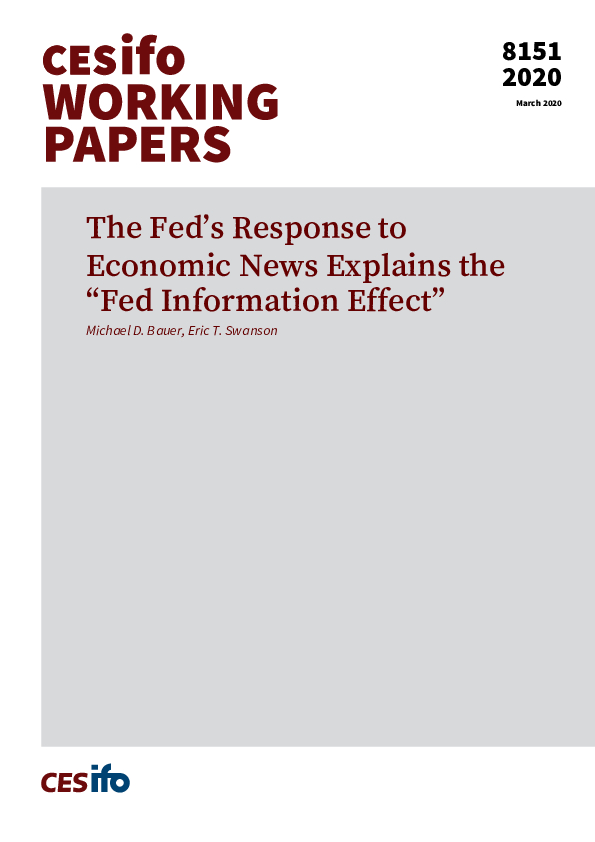The Fed's Response to Economic News Explains the "Fed Information Effect"
CESifo, Munich, 2020
CESifo Working Paper No. 8151

High-frequency changes in interest rates around FOMC announcements are a standard method of measuring monetary policy shocks. However, some recent studies have documented puzzling effects of these shocks on private-sector forecasts of GDP, unemployment, or inflation that are opposite in sign to what standard macroeconomic models would predict. This evidence has been viewed as supportive of a “Fed information effect” channel of monetary policy, whereby an FOMC tightening (easing) communicates that the economy is stronger (weaker) than the public had expected. We show that these empirical results are also consistent with a “Fed response to news” channel, in which incoming, publicly available economic news causes both the Fed to change monetary policy and the private sector to revise its forecasts. We provide substantial new evidence that distinguishes between these two channels and strongly favors the latter; for example, (i) high-frequency stock market responses to Fed announcements, (ii) a new survey that we conduct of individual Blue Chip forecasters, and (iii) regressions that include the previously omitted public macroeconomic data releases all indicate that the Fed and Blue Chip forecasters are simply responding to the same public news, and that there is little if any role for a “Fed information effect".
Fiscal Policy, Macroeconomics and Growth
Monetary Policy and International Finance